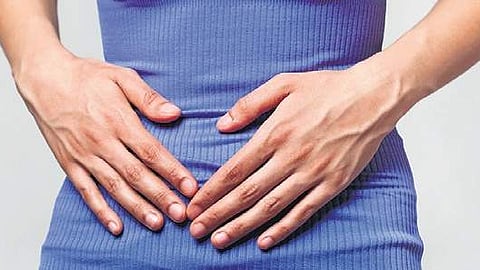

The Karnataka government is considering the introduction of paid menstrual leave for women employees in public as well as private sectors. As of now the talk is about offering six days of paid leave annually to women employees aged up to 55 during menstruation. An 18-member committee that was set up to study and recommend the implementation of menstrual leave for women employees recently submitted its draft recommendations to the state government. These are being discussed ahead of getting it endorsed in the state legislature.
The draft recommendations recognised such a leave as a “right of the women”, while stressing that it should be a paid leave which needs to be treated confidentially. It also suggested imposing penalties for denial of such leaves.
While it is a well-intended move, what needs to be questioned is whether six days a year as menstrual leave is adequate. Many women have extremely painful and excruciating menstrual cycles, and considering that this cycle repeats on an average every 28 days, six days a year is grossly insufficient.
It is crucial to note that many workplaces where women are employed do not have toilets, or are not hygienic, or are just not in usable conditions. This makes it extremely difficult for menstruating women to work comfortably. There have been many unfortunate cases in which young, married working women who experience painful menstruation have even preferred hysterectomy (removal of the uterus) to avoid menstruation forcing them to keep away from work and lose salary for it — sacrificing their dreams of having children for the sake of earning a livelihood. The new rules must mandatorily apply to contractors so that it benefits daily wage women workers who are most affected by this.
Lack of proper toilets and sanitation are also among the main reasons for many schoolgirls aged between 13 and 15 (the age of puberty when girls begin menstruating) to leave schools.
A little on the anatomical process to understand what menstruation is: It is the discharge of blood and mucosal tissue from the inner lining — called endometrium — of the uterus. The discharge happens through the vagina. It is the rise and fall of hormones, which characterises the menstrual cycle. Occurrence of menstruation signals that the woman is not pregnant.
It happens this way: The ovaries release the female hormones estrogen and progesterone, which cause the endometrium to build up with eggs. The built-up endometrium is ready to nurture the eggs fertilised by the sperms. The fertilised egg attaches to the endometrium, developing into a baby, signifying pregnancy. However, if the eggs are not fertilised, the endometrium breaks down and bleeds, passing out through the vagina — the process called menstruation. It is during this breaking down of the endometrium that different menstruating women experience varying degrees of pain or discomfiture. The average menstrual cycle lasts 28 days. The cycle starts with the first day of this menstruation, referred to as ‘period’, and ends with the first day of the next period, with an average woman ovulating on day 14.
While fully-paid maternity leave is already guaranteed for women employees, it is just as important to provide an adequate number of days of paid leave annually for menstruating women employees who require it.
It needs to be remembered that menstruation is as natural an occurrence as pregnancy and childbirth, needing just as much care for the well-being of the individual. It is part of the natural body process of shedding and generating, except that it is exclusive to women in their productive age. Therefore, it needs to be assimilated into our understanding of the body’s normal processes at work.
Moreover, while the committee’s draft recommendations are under discussion by the legislators, attention needs to be paid to whether this move could turn out to be counterproductive for women seeking jobs, wherein the companies could tend to prefer male employees over female employees to minimize such leaves being taken, fearing loss of work productivity.
While at it, it would serve to realise that all of us are born out of women — without exception — and an adequate number of days annually as menstrual leave for women employees (for those who need it) would not be a big ask. After all, we are all sisters and brothers from various mothers who once went through menstruation with a lot of stigma attached to it.
To right the wrongs must start now, and on a strong footing. Period!